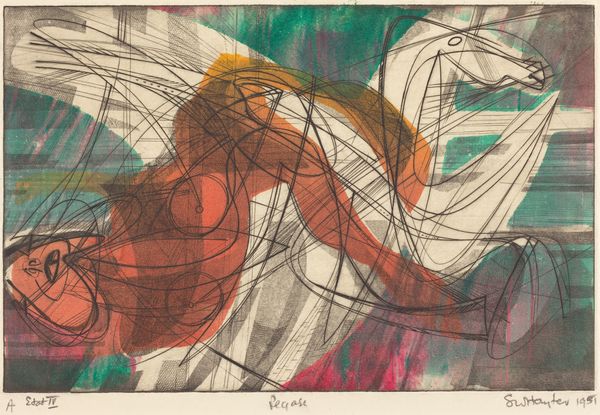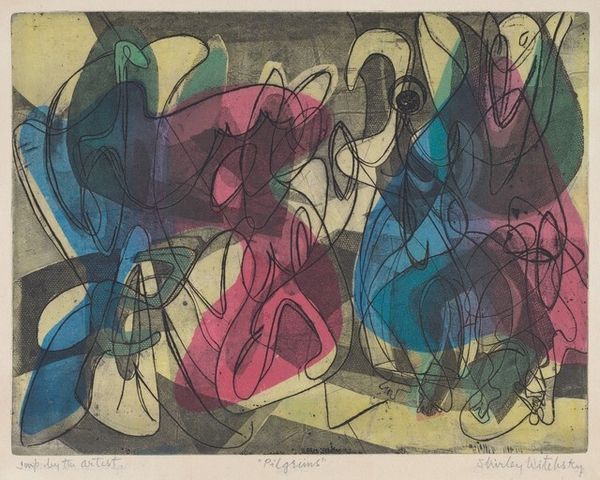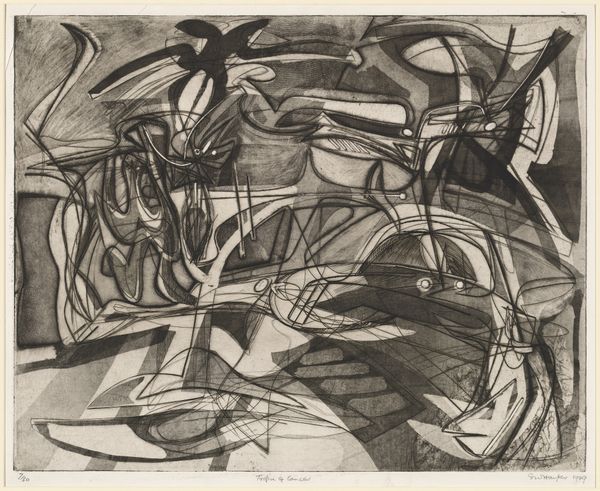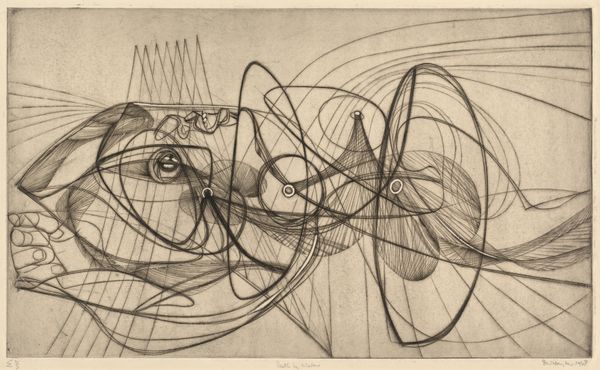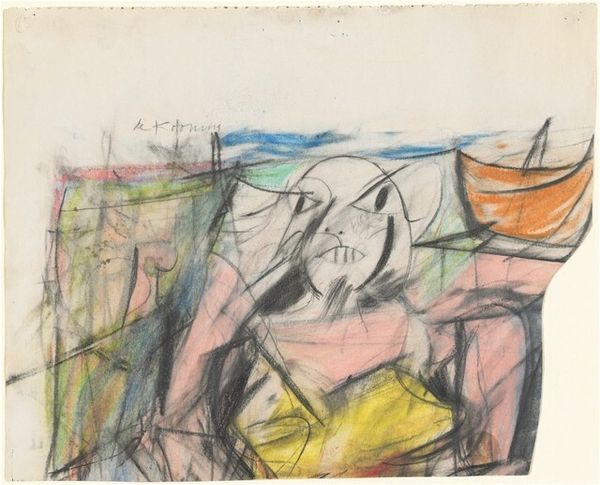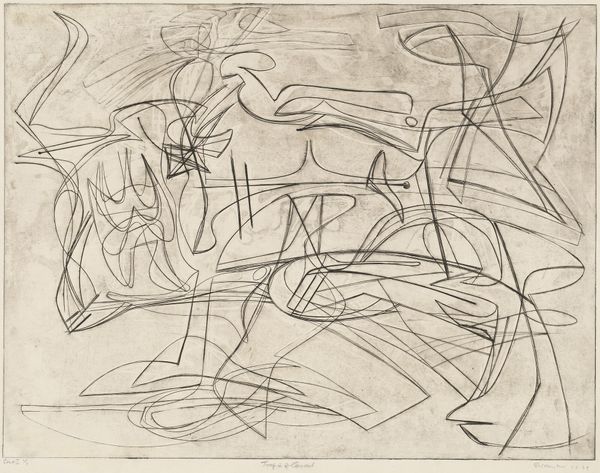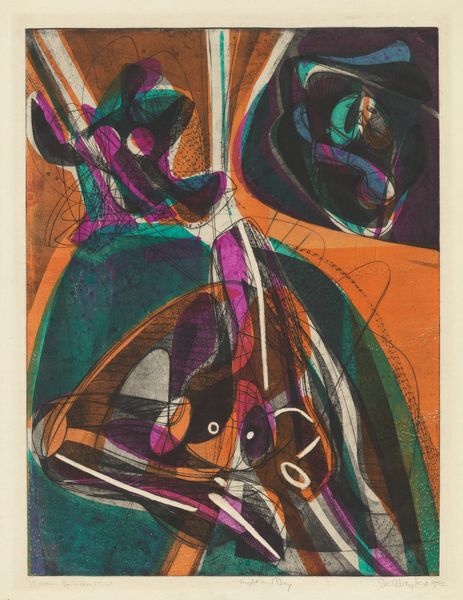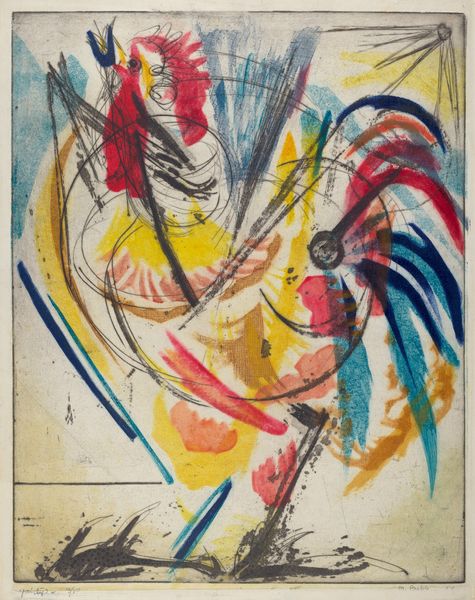
mixed-media, print, etching
#
abstract-expressionism
#
abstract expressionism
#
mixed-media
# print
#
etching
#
form
#
geometric-abstraction
#
line
Dimensions: plate: 37.7 x 49.8 cm (14 13/16 x 19 5/8 in.) sheet: 50.9 x 66.3 cm (20 1/16 x 26 1/8 in.)
Copyright: National Gallery of Art: CC0 1.0
Curator: Immediately, this print pulls me in. "Unstable Woman" by Stanley William Hayter—created sometime between 1946 and 1947, and assembled using mixed media with etching—vibrates with frantic energy, a wildness barely contained. Editor: I see it. It's unsettling, like looking at shattered stained glass rearranged by a mischievous wind. The title certainly fits the feeling. But what do you make of these circles and the abstracted shapes? Curator: The circles, especially the ones around the face, remind me of lenses, like looking through fractured perspectives. It suggests instability, maybe a distorted self-perception or how she's perceived by others. The whole thing reads like a symbolic dissection, perhaps exploring internal emotional turmoil made visible. Editor: Visually, the overlapping lines suggest layers of experiences or repressions—almost like the build-up in the psyche one can not necessarily access. Perhaps this could reflect society after the cataclysm of World War II. The geometric abstractions, fighting against a more "naturalistic" figuration are themselves suggestive, indicating a push-pull for the symbolic human contained by art. Curator: And it feels decidedly modern. You know, Hayter was pivotal in introducing surrealist ideas to American Abstract Expressionism, right? Maybe "Unstable Woman" explores both psychological complexity, like you mentioned, and also the trauma following WWII as societies and people readjusted and transformed themselves to live alongside the unimaginable horror that had just happened. Editor: Precisely! And given its creation so soon after the war, is there a thread to be extracted about women? Is the so-called "unstable woman" suffering a uniquely post-war neurosis that men simply were either too preoccupied, powerful or perhaps even culpable of exploring? Is there something to be said of women's contribution and lack of recognition post war? Curator: Oh, certainly a layer to consider. The bright colors contrasting with harsher blacks speak to that contrast. It is like the visible expression on the face may not be an expression of its internal machinations but the machinations thrust upon them...almost mocking with its joyfulness. I wonder, in an era so ripe with surreal and abstract form, was the subject truly the woman or a portrait of societal structures imposed upon women? It leaves one thinking, for sure. Editor: Indeed. It leaves me with a sense of both disquiet and a strange sort of compelling, organized chaos—beautifully rendered chaos. Curator: Right? It sticks with you; that instability vibrates. It almost serves as an interesting looking glass to observe unstable periods in time or your own instability in time. It invites some heavy reflections...
Comments
No comments
Be the first to comment and join the conversation on the ultimate creative platform.
